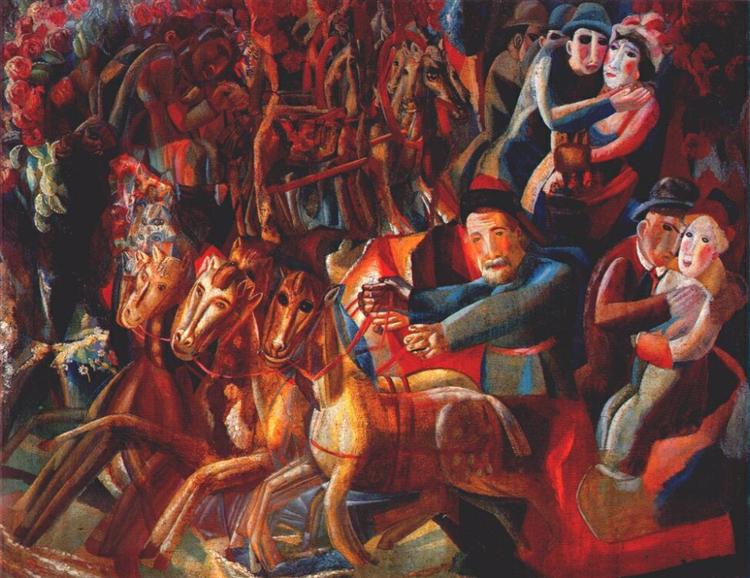Description
The painting "Panqueque Tuesday (Maslenitsa)" made in 1914 by Pavel Filonov, constitutes a masterpiece that invites a deep reflection on artistic techniques and the symbolism of the early twentieth century in Russia. This work is inserted in the context of the celebration of Maslenitsa, a traditional Russian holiday that marks the end of winter and is celebrated with banquets, community acts and, of course, pancakes.
At first glance, Filonov's work presents a rich amalgam of colors and shapes that are intertwined in an almost caleidoscopic way. The color palette, predominantly terrible, reddish and ocher, transports the viewer to the viscerality of the earth and nature, evoking both fertility and the effervescence of community life. The complexity of the composition reflects the painter's technical mastery: with an awkwardly detailed approach, Filonov structures the work in a way that reminds of the technique of "buffuturism", where geometric shapes and dynamics converge in controlled frenzy.
In it painting Sketches of human figures emerge in what seems like a celebration, although they blur between lines and repetitive forms. This frenzy of figures and shapes tasting the gaze, creating a sensation of constant and disorienting movement. This style is characteristic of Filonov, who often resorted to the so -called "art analytics" or "analytical realism", a technique that is based on the meticulous analysis and the dissolution of traditional representation structures to achieve a more level of perception deep.
"Panqueques Tuesday" is, in this sense, an amalgam of reality and abstraction, where each stroke and each figure seem to decompose and rebuild in an endless cycle. The work is not limited to representing the holiday, but the unbridled and reconfigure, almost molecularly, reflecting Filonov's intention of not only translate reality, but of building it and deconstructing it through its art.
The historical context in which Filonov painted this work is also significant. In 1914, Russia was on the verge of social and political transformations that would culminate in the 1917 revolution. It is possible that the chaotic dynamism of painting reflects tensions and the imminent change in the socio-political environment. Filonov, who lived and experienced these changes closely, was deeply influenced by the social movements of his time, something that manifests indirectly in his work.
Finally, "Panqueques Tuesday" offers us an convoluted and deep look at the cultural and artistic legacy of a transition Russia. With its complex structure, the bold use of color and the innovative interpretation of the forms, Pavel Filonov achieves, through this work, transcend the mere festive representation and immerses us in a universe where reality moves and constantly changes, inviting us Reflect not only on the feast represented, but about the very nature of change and transformation both in art and life itself.
KUADROS ©, a famous paint on your wall.
Hand-made oil painting reproductions, with the quality of professional artists and the distinctive seal of KUADROS ©.
Art reproduction service with satisfaction guarantee. If you are not completely satisfied with the replica of your painting, we refund your money 100%.

